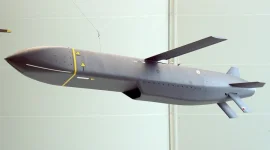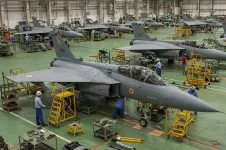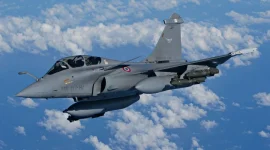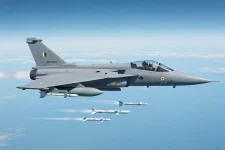- Views: 2K
- Replies: 11
In a significant move to bolster its aerial combat strength, the Indian Air Force (IAF) is pursuing a crucial upgrade for its fleet of Mirage-2000 fighter jets. The plan involves equipping the aircraft with the indigenous Astra Mk2, a state-of-the-art Beyond Visual Range Air-to-Air Missile (BVRAAM).
This initiative, which requires collaboration with the original French manufacturer Dassault Aviation, aims to resolve a critical capability gap in long-range engagements and ensure the veteran fleet remains a formidable asset in the face of modern aerial threats.
The IAF operates approximately 50 Mirage-2000 aircraft, a platform that has served as a cornerstone of India's air power for decades and proved its mettle in conflicts like the 1999 Kargil War and the 2019 Balakot airstrike.
However, their current armament, the French-made MICA missiles, have a maximum range of about 80 kilometres.
This is significantly shorter than the missiles fielded by regional adversaries, such as China's PL-15 (estimated range of 200-300 km) on its J-20 jets and Pakistan's AIM-120C-7 (around 120 km) on its JF-17 fighters.
This disparity places the Mirage-2000 at a disadvantage in modern beyond-visual-range (BVR) combat, where the ability to detect and fire from a greater distance is paramount.
The proposed solution is the integration of the Astra Mk2 missile, developed by India's Defence Research and Development Organisation (DRDO).
With a reported range of 160-180 km, the Astra Mk2 represents a major advancement over its predecessor, the 110-km range Astra Mk1, which has already been successfully integrated with the Su-30MKI fleet.
Powered by a dual-pulse solid rocket motor for enhanced speed and manoeuvrability, the Astra Mk2 is designed to compete with leading global missiles like Europe's Meteor.
However, the project faces a significant technical and diplomatic obstacle.
The Mirage-2000's Thales RDY radar system is not currently compatible with the Astra Mk2. To make them work together, the IAF needs access to the radar's source code, which is proprietary technology owned by the French firms.
The IAF is reportedly in negotiations with Dassault Aviation to acquire this code, but France has historically maintained stringent controls on its defence technology exports.
This challenge is compounded by financial considerations. A previous decade-long upgrade (2011-2021) to modernize the Mirage-2000 fleet to the -5 Mk2 standard, which included new avionics and mission computers, cost approximately $2.2 billion, or over $40 million per aircraft.
It is anticipated that Dassault Aviation would demand a substantial price for the source code, potentially adding major costs to the project.
With the Mirage-2000 fleet expected to remain in service until at least 2035, this missile upgrade is considered a high priority.
While alternatives, such as retrofitting the jets with the indigenous Uttam AESA radar, have been considered, such a move would likely involve extensive and costly re-engineering.
Therefore, the success of this vital enhancement hinges on the outcome of complex technical and financial negotiations with France, as the IAF works to extend the operational life of one of its most trusted fighter aircraft.




